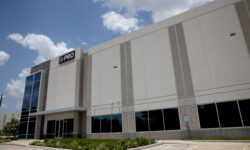2022 Security End-User Forum: Security Directors Share Needs and Wants
Managers from three customer markets deliver keen insights to give integrators a better perspective on how today’s commercial customers think and what they really need most.

The Gilbert (Ariz.) Public School District aims by 2024 to have all its schools’ video security systems completed and integrated. Each site will be able to review its own cameras, with all footage also fed to a central command center.
How have your experiences with integrators gone overall, and what do you look for in a technology provider?
Pluretti: The best relationship you can have with your integrator is an honest one. There was a concern we had regarding the right camera for the right job. It’s about calling them on that and saying, “Hey, listen, I don’t think, based on the camera you’re putting here and the technical data I looked at, that it has a high enough PPF to actually be able to identify not only just detect.” It’s about you yourself knowing a little bit more about that or sitting down with a salesperson or a service manager and saying, “Hey, teach me a little bit more about this so I can talk a little bit more intelligently about it and bring in the right solution.”
Because right now with our integrators, we’re putting a lot of trust in the solution they’re providing us and that the cost is on par with what our needs are. It’s important to have those conversations once in a while and say, “Listen, we’re not satisfied with X or we’re not satisfied with the service or with the product.”
It’s extremely healthy to go through a regular RFP process from which your vendor has to continue to compete at a market level and retain them as a client. It’s scary for us as directors to always have to think about going to a new vendor because of the amount of time and energy it would take to bring someone else in. But complacency sometimes leads to us paying forward in the long run. The vendor needs to continue to win our business in order to stay with us.
Cain: Honesty and trust are the real big ones. I don’t need somebody coming to me with top-tier security level experience like at a government facility. We’re a school district, we’re not going to need that, we’re not going to use that. I look for somebody who has experience in the educational world and K-12 at that. Then most important to me is communication. If I need them, I want to be able to get ahold of them. I have had experiences with some of the legacy systems I was handed down and the integrators who installed those where it was rough times just even reaching someone. Communication is key.
Sarnese: Nothing happens without trust, and you have to trust your integrators providing you with the best solution for whatever problem you’re trying to solve. I’ve been in this business now for 35 years. I’ve had some bad experiences with integrators because the trust wasn’t there or their service wasn’t there or the communication wasn’t there. Or there was just one product line they were selling and when I wanted to look at others they were unwilling and that destroyed the relationship.
I like to deal with integrators that work in multiple industries because I’m sure others have solutions or best practices I could deploy in my organization. I really like the integrator to have a broad spectrum of clients because they see different solutions in different applications for things.
If my integrator has not looked at servicing or is unable to install a certain product I really like, if they’re unwilling to do the research and become familiar with that and potentially be a vendor for that product, that’s a dealbreaker. As the customer, I should be driving what the integrator is providing me. I like an integrator that is willing to listen and see what else is out there so we can learn together.
Assuming cost and budget are the biggest impediments to realizing your security solutions goals, what other hurdles do you face?
Pluretti: It would revolve around personnel and availability. Anytime we’re going to bring a technology to one of our campuses, that requires IT to be involved, it requires facilities to be involved and it requires some other partners. Post-pandemic, everyone, regardless of field they’re in, has inherited this new expectation where we all have to be doing 10,000 things at once. Everyone has had this unbelievable pace assigned to their level of work.
It’s become more challenging to integrate new technologies with those same campus partners that used to be able to just drop what they were currently doing and help with something because they themselves have this impossible workload and tasks to deal with. It’s just this new dynamic we’ve all been thrust into where they’re no longer available to help and aid in the way that they used to. That has delayed a lot of our projects. It’s made it so that a solution we’re used to plugging in and taking only a couple of weeks now takes a couple of months, and it slows the integration of those technologies.
What we’ve seen now is that it takes a lot more planning, a lot more strategizing and a lot more notification of if it’s going to impact or we’re going to need somebody else, let them know further ahead of time than you’re used to so that they can weave that in and give you back timelines in which you can integrate. We’ve had to modify our approach a little bit to include them earlier in the process. We’re also looking at how a lot of our systems technology-wise can help others.
We are looking at a system right now called ARIA that shows all the devices that are connected to your access points throughout the institution and, while you can’t track any single device, it shows them as dots on a map. Then being able to identify the most common pathways people take during fire alarms, the most common pathways and thoroughfares and entrances from which people enter a building. If there is a fire alarm and we’re seeing there are a couple of cellphones still connected in that building, being able to directly go to those types of locations helps not just security but helps across the institution.
They now provide a solution where we’re able to see max occupancy of that building and the times and dates or days of the week we are seeing the highest amount of occupancy. We can see when people are leaving the building at night so we can turn our temperatures down or up based on that, and it’s leading to increased energy savings. Then IT is now using that as an IT health-checker for their access points.
When they see a big dark area on the map where they know there shouldn’t be people, they know that an access point has an issue. We haven’t brought that online yet, but the breadth at which that aids the institution is astronomical. It’s irreplaceable once it goes into place, but it’s getting it there that I think is more of a challenge. It probably is equal to cost as a challenge right now.
One final thing, the microchip shortage is definitely hurting all of us in this realm. We have cameras, card readers. Even if you’re using the HID cards for access cards, even the chips for those, getting just the ID cards is sometimes a six- to eight-month backlog to get all these solutions.
Cain: The supply chain has been a killer on many of the products we were trying to implement or that we already have in place but are trying to get a replacement. Those HID cards are ridiculous. Aside from that, quite honestly my biggest hurdle is a cultural change. I came into my position brand new. My position didn’t even exist before I took it. They didn’t have anybody who was over security. They had many different people who took some initiative toward security, but the role didn’t exist. I came in and did all this fact-finding and that’s how I built my wish list as I stated earlier. On the back of my office door here, it reads, safety over convenience.
From our staff to our students to even visitors to our campus they were used to convenience. It is a very conservative neighborhood that encompasses our school district. We had this open campus feel to everything and people felt they could walk onto a campus anytime, walk right through the building, never being asked to see an ID, never being asked their purpose of being there. Now, you walk into our high schools that once was wide open, now they get stopped, they get asked for an ID, they have to be buzzed into the campus.
At first, it was difficult. There was a lot of complaining from visitors to the campus, but as the four years have progressed people have become accustomed to it, they learn. We know what happened in Texas a few months back. I don’t want to use that as a jumping-off point, but when those tragedies happen it really propels my area. We hate to use that to propel what we need, but in reality it does. It causes naysayers, these people who would rather just walk through the school unchallenged, to reconsider.
Sarnese: Access to capital dollars and infrastructure dollars is a challenge across the industry. Supply chain is going to impact us for quite some time. Staffing is going to impact us for quite some time. There’s a term we’re hearing almost on a daily basis that was typically reserved for IT when they talked about what the network can handle: bandwidth. The network can only handle so much bandwidth. Now we’re talking about our time and our energy as bandwidth. There’s always competing project, competing interest.
It’s about, do we have the bandwidth to actually get it done? IT has to have the bandwidth to support me, facilities has to have the bandwidth to support and so forth. Collectively, we have to decide where we’re going to spend our time and energy to get the biggest bang for our buck so that we can actually implement it, and not implement this one project 5% and this project 10%. What can we actually implement successfully and make an impact in our organization?
If you enjoyed this article and want to receive more valuable industry content like this, click here to sign up for our FREE digital newsletters!

Security Is Our Business, Too
For professionals who recommend, buy and install all types of electronic security equipment, a free subscription to Commercial Integrator + Security Sales & Integration is like having a consultant on call. You’ll find an ideal balance of technology and business coverage, with installation tips and techniques for products and updates on how to add to your bottom line.
A FREE subscription to the top resource for security and integration industry will prove to be invaluable.








